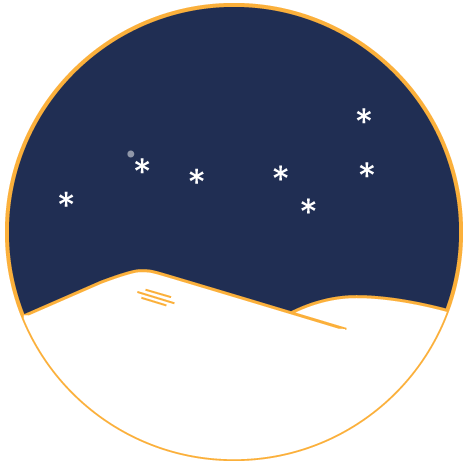Club News for 5/15/20
Comments Off on Club News for 5/15/20Coming Events and Star Parties:
– 05/15/20: Star Party online via Facebook, 8:00pm; talk topic: Our Magnetic Sun
– 06/19/20: Star Party at White Memorial, 8:00pm; talk topic: to be announced
– 07/17/20: Star Party at White Memorial, 8:00pm; talk topic: to be announced
Star Parties:
05/15; 8:00pm: talk topic – Our Magnetic Sun
If you’ve done solar observing during White Memorial’s Family Nature Day events in September you may have seen sunspots, or on a particularly lucky day, a prominence. These are caused by powerful magnetic fields; occasionally these fields cause hundreds of millions of tons of electrically charged particles to be ejected into space. If this material happens to reach Earth’s atmosphere, it can cause an aurora in the North and South polar regions. “Our Magnetic Sun” describes these and explains why they occur.
We’ll also have our regular short “What’s Up Tonight” talk. Because this is our first online talk, we’ll present the “What’s Up” talk first in case of glitches. Be sure to go to skymaps.com and download this month’s Northern Hemisphere chart.
https://facebook.com/lhastro
06/19 and 07/17; 8:00pm: talk topic – to be announced (We hope to reschedule the talk on asteroids planned for March for one of these months.)
Have a suggestion for a talk topic? Please let me know.
What’s Up:
Planets: Venus: The goddess of love has been visible in the western sky since February, but she’s taking a few weeks off later this month until reappearing as a morning star. Mercury is also up, setting around 8:45pm, but it’s often tough to pick out when the Sun is up. Look towards the west half an hour before sunset – maybe you’ll be lucky. Jupiter and Saturn rise about 1:00am, so by 4:00am or so they’ll be high enough to see well. Jupiter is a bright white dot, Saturn a bit dimmer and tan in color. They’ll rise a little earlier each day, so your chances of seeing them improve as the weeks go by. Mars rises about 3am.
Evening constellations: Winter constellations like Orion and Gemini are low in the west and set early. The small constellation Canes Venatici – the Hunting Dogs – is almost directly overhead. It’s flanked by the constellation Bootes with bright orange-yellow Arcturus and Corona Borealis – the Northern Crown – to the east and Ursa Major – the Great Bear – to the northwest. Ursa Major and the big dipper are very high. “Follow the arc” of the dipper’s handle to Arcturus, and “speed on to Spica”, a bright star in Virgo.
Astronomy news: Astronomer and astrophysicist Margaret Burbidge died on April 5 at the age of 100. Born in the U.K., she took advantage of the blackout during the second world war to use the University of London’s observatory. In 1948 she married Geoffrey Burbidge, an astrophysicist. In the early 1950s the Burbidges began working with William Fowler and Fred Hoyle (who coined the term ‘big bang’ disparagingly) on the abundances of chemical elements in stars. In 1957 the four published one of the most important papers on astrophysics ever. The thesis of the B2FH paper (pronounced B squared F H after the authors’ names) is that heavier elements are synthesized from lighter ones by thermonuclear reactions within stars, a process called stellar nucleosynthesis. Returned to space when a star dies, these elements recombine to form new stars and planets, beginning the cycle once more. As the paper describes it, we are all, in essence, made from stars – stardust, as Carl Sagan used to say.
The Burbidges moved to the United States permanently in the early 1960s. At the University of California San Diego (UCSD) Margaret measured the masses, compositions, and rotation curves of galaxies and performed early spectroscopic studies of quasars. She campaigned in opposition to discrimination against women in astronomy and was also opposed to positive discrimination. In 1972 she turned down the Annie J. Cannon Award of the American Astronomical Society (AAS) because it was awarded only to women: “It is high time that discrimination in favor of, as well as against, women in professional life be removed”. In 1976, she became the first female president of the AAS, and during her term she convinced the members to ban AAS meetings in states which had not ratified the Equal Rights Amendment to the US Constitution. She was President of the American Association for the Advancement of Science (AAAS) in 1982-83.
Club news:
– We were planning to resume work on the observatory and be done by now. In October we dug holes and poured concrete for three piers to support three new – well, new to us – computerized telescopes. We hope to have the observatory working for the June star party.
Check our calendar for star party dates and topics, or see https://nightsky.jpl.nasa.gov/club/event-list.cfm?Club_ID=1449. If you have a question about the club, you can reach the club secretary at lhaacsec@gmail.com. And for current news, you can also see our Facebook page at www.facebook.com/lhastro.
– Want to see this what’s up this month? Go to www.skymaps.com. (Make sure to pick the 40º North chart.)
NOTE: we’re now meeting via Zoom; if you would like to join a meeting, please let the club secretary know.
We hope to see you at the next star party. Keep looking up! And you’re always welcome to come to a club meeting at 7:30 on the 2nd Friday of each month except July. Meetings are at Center Congregational Church, 155 Main St. in Torrington. (Enter via the side door. We’ll be on the second floor in room 24 or 23.)

Comments are closed